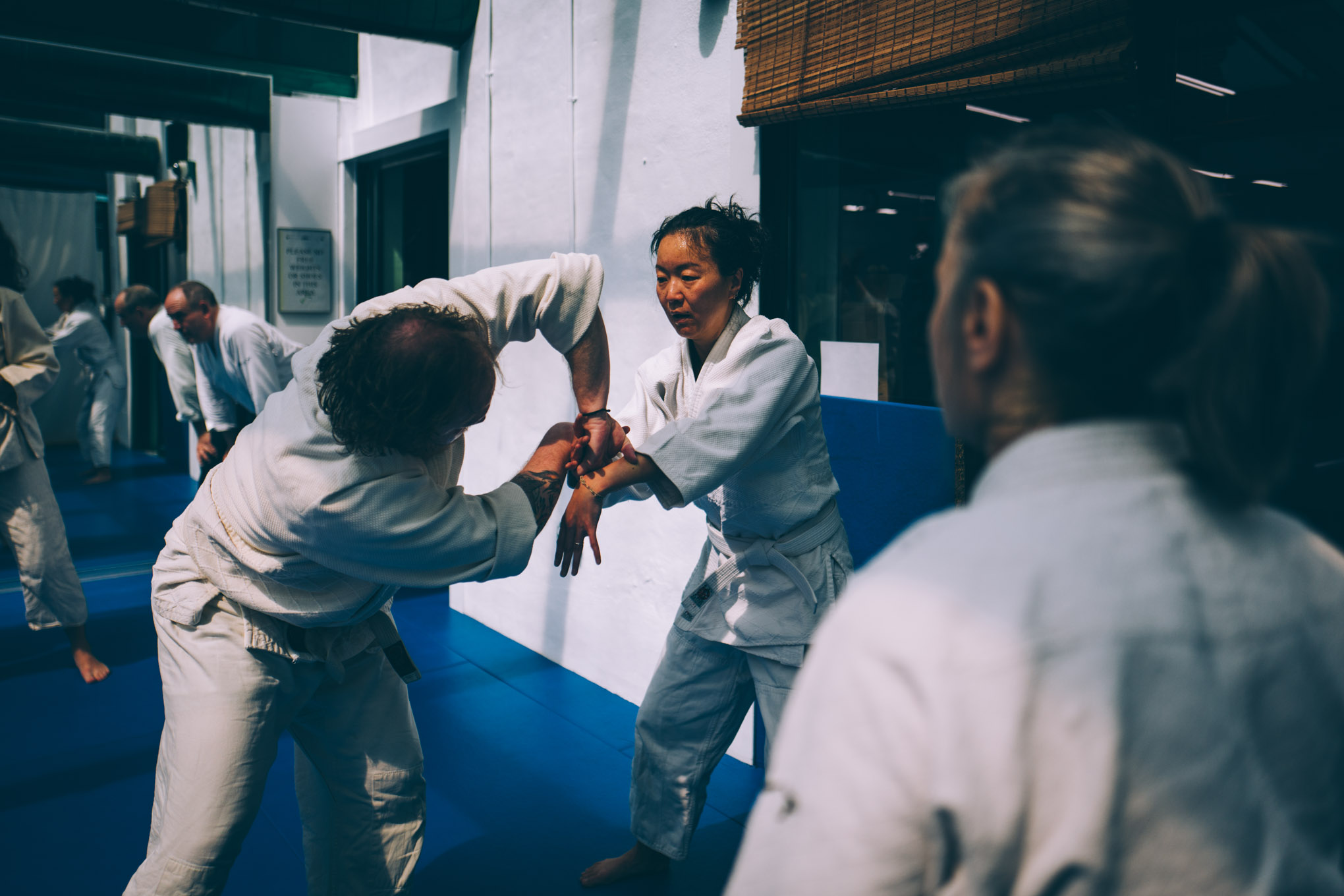Resistance and correction are like a virus in aikido. A while ago, it was suggested to me that I stop correcting people while training, and I have tried to do that (with varying success). What I have found is that keeping the focus on myself in my training provides me with more than enough to work on. When I turn my focus outward, I lose awareness and stop pushing myself to be more honest about my own training.
Often, I find myself correcting people when I am feeling out of sorts. I am uncomfortable, so I look for an escape. Since there is someone right there with me, it is convenient to focus on them. When I keep the focus on myself, I keep trying to find alternate ways to do a technique, or to adapt my ukemi to what is actually happening.
I have written before about how being present in the moment allows for essential self-correction and also the opportunity to let go of anxiety about completing a technique. Keeping the focus on yourself is an essential component in the practice of being present in the moment.
As an uke, my job is to pretend that I don’t know what technique is coming, and so respond to what is actually happening. If I really want to show my partner that their technique is not effective, I can show them by simply moving where they take me. If an opening presents itself, I can apply a kaeshi waza (a reverse).
But stopping my partner in their tracks, especially when I know what’s coming, is counterproductive. By resisting and preventing my partner from completing their technique, I am telling them I know better. Even if I do know better, so what? Stopping people is not positive; it is a false way to build myself up at the expense of my partner.
At the same time, ukes often are too compliant. By this I mean that ukes do not sufficiently commit themselves to their attacks (perhaps out of a desire to actually help nage). This deprives nage of a chance to try a dynamic technique. The issue of resistance and stopping people is complicated and a continuing problem in aikido. I believe one way to address this is through connected ukemi, what I like to call constructive resistance.
This means uke needs to attack with an empty mind and no preconceptions about the throw. Uke needs to respond to what is actually happening—not what they expect, want, or even fear will be next. If nage is having trouble and is less advanced than uke, connected, committed ukemi allows the nage to feel how the technique works. That doesn’t mean uke does the technique for her partner. That means she sticks with them in a constructive way and lets them struggle through. his type of ukemi is a great way to challenge yourself to be more spontaneous and present in the moment. Taking risks will make you better. Thinking in advance about the way you want your ukemi to look makes you worse. Stopping your partner repeatedly just frustrates.
Uke needs to attack with an empty mind and no preconceptions about the throw.
I have often not trained the way I am describing because I’ve been afraid to make my partner angry. Sometimes when people feel thwarted, they resort to muscling, which leads to injuries.
As nage, I have to let go of expectation about my execution of a technique. I am learning to welcome a struggle rather than resist it. I never blame my uke, regardless of the situation. It is my responsibility and if I think I look bad, my focus has shifted from myself to what I think others may think of me. This is never helpful.
Anytime you feel different inside your body and your mind, you give yourself an opportunity to deepen your training. In this way, we can hone our awareness and refine our command of our bodies and our minds. Over time, we can apply these tools to transform our aikido into something uniquely ours.

